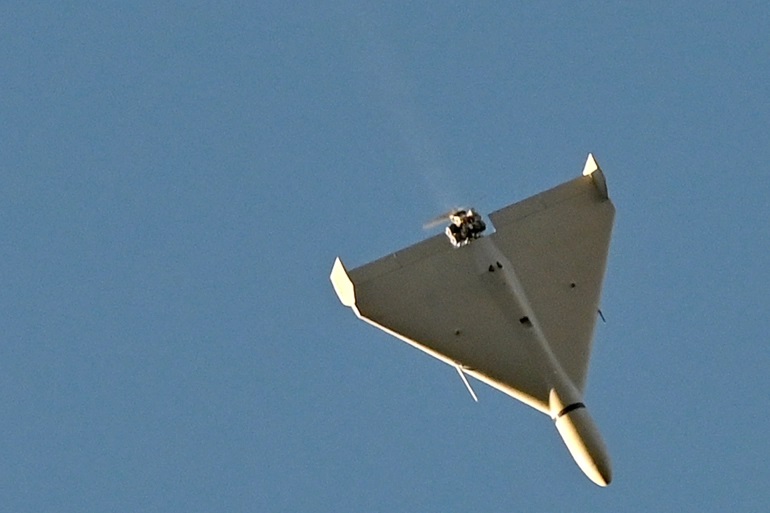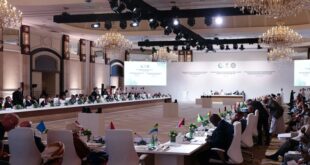
Unlike those that return to base once missiles are launched, suicide drones are destroyed in an attack.
A new wave of deadly Russian air strikes on Ukraine has killed more than 25 people and wounded over 100, according to authorities in Kyiv, in the most extensive attacks since the early days of the war.
The current strikes, which began on October 10, have targeted at least 10 regions across the country and have been carried out using Russian missiles as well as Iranian-made drones, Ukrainian authorities have said.
Swarms of explosive-laden, unmanned aircraft called “kamikaze” drones targeted Kyiv on Monday, killing at least four people and targeting energy facilities.
Among the victims was a young couple expecting a baby in three months, according to the mayor of Kyiv.
The Ukrainian Air Force said it destroyed at least 37 drones in one day.
For their part, officials in Tehran deny supplying Russia with the weapons.
Why are they called ‘kamikaze’ drones?
Unlike drones that return to base once missiles are launched, “kamikaze” or “suicide” drones are destroyed in an attack.
Al Jazeera’s defence analyst Alex Gatopoulos said these munitions can hover above an area to identify a target before diving to destroy it.
Like cruise missiles, they can strike targets hundreds of kilometres away, but cruise missiles are expensive, and Gatopoulos said “kamikaze” drones are a cheaper yet precise alternative.
Ukrainian President Volodymyr Zelenskyy said Russia had bought 2,400 “kamikaze” drones but its fleet is being depleted quickly.
Where do they come from?
Ukraine says Russia imported the drones from Iran, where they are known as Shahed-136, which could be translated as “witness of faith” but also as “martyr”.
Mykhailo Podolyak, an adviser to the Ukrainian president, accused Tehran of being responsible for the “murders of Ukrainians”. The Kremlin did not comment.
Iran, which has called NATO’s presence in Eastern Europe the root cause of the war, has denied supplying Russia with arms.
Gatopoulos said the drones are unlikely to be Russian-made because Moscow “has been behind in developing low-end tactical drones, especially armed ones”.
Samir Puri, an analyst at King’s College London, told Al Jazeera that some form of a sales agreement is likely to have taken place between Moscow and Tehran.
These drones were “bought off the shelf from Iran, moved to the war zone and being used, I think, very much as a weapon that will continue to confuse Ukrainian air defences by adding something else in the mix,” Puri said..

World Opinions + Al jazeera News




 World Opinions Débats De Société, Questions, Opinions et Tribunes.. La Voix Des Sans-Voix | Alternative Média
World Opinions Débats De Société, Questions, Opinions et Tribunes.. La Voix Des Sans-Voix | Alternative Média




